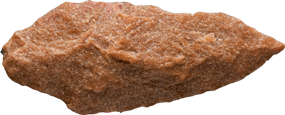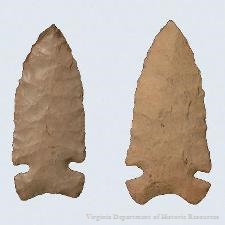

American Indians fashioned many of their tools from stone, which preserves remarkably well in the archaeological record. They used stones that were available to them locally and also obtained raw materials for their stone tools from distant sources, either directly or through trade with other American Indian groups. Some tool shapes are diagnostic of a particular time period and a specific geographic area. In the absence of material suitable for radiocarbon analysis or other dating techniques, archaeologists rely on temporally diagnostic chipped stone tools to date archaeological sites. Through careful excavations and decades of research, archaeologists have assembled a number of printed guides that assist with identifying these temporally diagnostic chipped stone tools (Coe 1964; Justice 1987; Ritchie 1971). COVA’s online guide is designed as a virtual extension of these various print guides and to aid archaeologists with more rapid identification of their diagnostic chipped stone tools.

Three major time periods are widely recognized throughout North America: Paleoindian, Archaic, and Woodland. The ranges for these time periods vary from region to region, and sometimes within the same state, and are often subdivided into early, middle, and late divisions. The Ice Ages ended during the Paleoindian Period (16,000 to 8,000 B.C.), and megafauna such as mammoths and mastodons were becoming extinct. Humans migrated into the Americas, with some creating chipped stone tools that had a distinctive flake, or flute, along one or both sides. Some of these fluted points were used to hunt megafauna, although recent research shows they also served as multi-functional knives in some instances. At the beginning of the Archaic Period (8,000 to 1,200 B.C.), temperatures became warmer and drier. What had been a landscape characterized by grasslands and open forests transformed into denser forests of pine, oak, and hickory.

Coe, Joffre
1964 Formative Cultures of the Carolina Piedmont. Transactons of the American Philosophical Society 54, Part 5.
Justice, Noel D.
1987 Stone Age Spear and Arrow Points of the Midcontinental and Eastern United States: A Modern Survey and Reference. Indiana University Press, Bloomington.
Ritchie, William A.
1971 A Typology of and Nomenclature for New York Projectile Points. New York State Museum Bulletin Number 384.